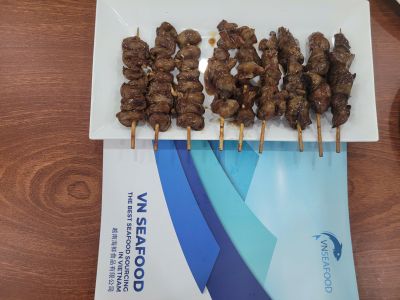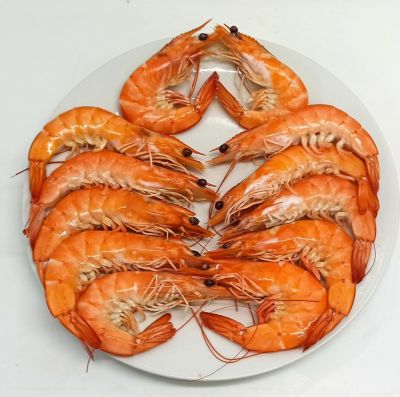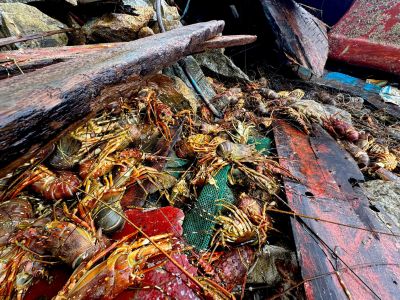In mid-November, central Vietnam experienced sudden and destructive flooding that has severely impacted seafood farming communities, especially lobster farmers in Xuan Dai Bay and Song Cau Ward in Dak Lak Province. The region, long recognized as Vietnam’s traditional lobster-farming hub, suffered unprecedented losses as floodwaters arrived within hours, destroying cages and causing massive lobster mortality.
According to local authorities, more than 95% of total lobster production was lost, with nearly 80,000 farming cages damaged or washed away. Early estimates show that approximately 21,000 tons of lobster died, resulting in economic losses of over VND 2,400 billion. In Xuan Dai Ward alone, 430 out of 536 farming households were affected, with over 22,500 out of 27,000 cages damaged, representing losses of around VND 610 billion. This level of destruction is described as the worst disaster since lobster farming began in the area.


Local governments are now mobilizing emergency resources to help farmers recover, clear debris, and prevent environmental contamination. However, many families have lost not only their production facilities but also their long-term financial stability. With farms destroyed, cages swept away, and debts rising, thousands of households are unable to restart farming in the near future.
For farmers, lobster cages represent more than just equipment—they are the foundation of their livelihood and the future of their families. Many now face months, if not years, before they can rebuild. Stories from the community reflect the gravity of the disaster: farmers losing tens of thousands of lobsters overnight, entire life savings gone, and emergency sales of remaining stock far below cost as families struggle to reduce losses.
Impact on the Seafood Market
This natural disaster is expected to lead to a significant and prolonged shortage of lobster raw material across Vietnam. With a majority of farming systems destroyed and recovery requiring substantial time and investment, the supply of Vietnamese lobster is forecast to decline sharply over the coming months—and potentially years.
As a result, the industry anticipates:
-
Severe raw material shortages in the short and medium term
-
Limited harvest volume for upcoming production cycles
-
Upward pressure on prices due to scarcity
-
Potential long-term supply instability across the market


Vietnam’s seafood suppliers, exporters, and international partners should be prepared for reduced availability and rising costs until farming operations can be rebuilt and stabilized.
At this critical time, the Vietnamese seafood community is working together to support affected farmers and ensure transparent updates to global customers. We will continue to monitor developments and provide timely information to help partners plan their procurement needs effectively.





